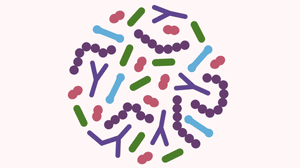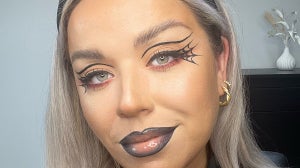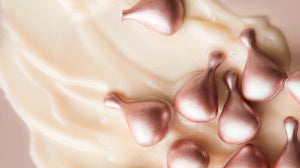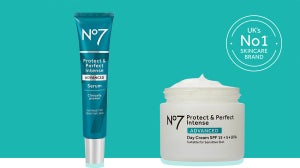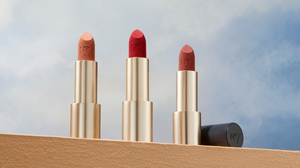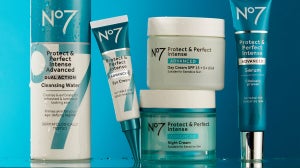
Are you finding your complexion breaking out in redness? From environmental stressors to sun exposure or hormones, there are a number of factors that could be the culprit – or it could even be a combination of a few.
At No7, we understand the importance of feeling confident in your own skin. However, for many of us, redness on the face can be a daily struggle, affecting our self-esteem and making us search for solutions. Here we’ll take a closer look at why your skin may be looking flushed and most importantly, how you can effectively reduce facial redness, as well as helpful self-care practices and skincare for your skin type.
Why does your skin look red?
It's essential to understand that various factors can affect redness of the face. There are some common reasons why you might be dealing with reddening, including:
Increased circulation: This type of redness occurs when you blush, when you might have engaged in exercise that’s got your heart pumping or have had a facial massage that has increased bloody supply to the face. This type of redness is temporary, will pass quickly and completely normal.
Sensitive skin: Some people naturally have more sensitive skin which is prone to redness. This heightened sensitivity can be triggered by harsh skincare products, chemicals, allergens and extreme weather conditions, so it’s important to take these factors into consideration when thinking about your skincare routine and lifestyle choices.
Skin irritation: Harsh skincare products, excessive exfoliation or improper cleansing routines can irritate the skin, leading to redness.
Sun exposure: Prolonged sun exposure without adequate protection can cause sunburn, which can appear as redness, heat and irritation on the face.
Hormonal changes: Flushing and redness is a common sign of the menopause, but can also be caused by hormonal fluctuations at other times.
Allergies: Allergic reactions or intolerances to certain foods, skincare products or environmental factors can lead to facial redness, irritation and itching. Contact dermatitis is commonly triggered by an allergen coming into contact with your skin.
Weather conditions: Extreme weather conditions, including cold, windy weather, can cause skin to become dry, sore and red.
Skin conditions: A number of skin conditions, such as eczema, psoriasis, and rosacea, can contribute to redness and inflammation on the face.
Rosacea: Rosacea is a common skin condition characterised by persistent redness, visible blood vessels and sometimes pimple-like bumps. It often affects the center of the face — including the forehead, cheeks and nose. If you think you have rosacea you should speak to your GP. You can read more about rosacea here.
Underlying health condition: In some cases, facial redness can be linked to an underlying health issue. It is always best to check any facial redness or redness on any part of your skin with your GP.
What does the redness on your face look and feel like?
Facial redness can show up in several ways and its severity may vary from person to person. Here are some common signs to help you identify which course of treatment you may need to follow:
Flushing: Sudden and temporary redness often triggered by emotional factors, temperature changes, exercise or exertion, hormonal change (especially around menopause) or even spicy foods. Flushing not brought on by the factors listed here should be checked with your GP.
Persistent redness: This is redness that is more constant and tends not to fade away or change with different times of the day, exercise or weather conditions. This type of redness could indicate an underlying condition, such as rosacea, and needs to be checked with your GP.
Bumps and pimples: Acne can sometimes cause areas of redness to appear on the face. Speak to your pharmacist or GP if you suspect acne may be the cause.
Burning or stinging sensation: Red skin can sometimes feel warm to the touch and may even sting or burn. This could indicate excessive sun exposure, exposure to an allergen or a skin condition. Speak to a pharmacist or your GP for advice.
Dryness: Facial redness can be associated with dry and flaky skin, leading to tightness and discomfort. Speak to your GP to rule out eczema or another skin condition if you’re experiencing suffering from dry, red skin.
Itching: Red skin may itch, which can further exacerbate the issue if scratched. This could indicate a number of issues including allergy, sunburn or eczema, speak to a pharmacist or GP if you have itchy, red skin.
How can you help reduce redness on your face?
Facial redness can be a source of frustration, but once your GP has ruled out a medical condition, the right skincare routine and lifestyle adjustments can effectively help to reduce redness and give you a calmer, more soothed complexion. Here are some tips to help you regain your confidence and put your best face forward:
Gentle cleansing: Start your skincare routine with a gentle cleanser. Avoid harsh scrubs or abrasive cleansers that can aggravate redness. Opt for a hydrating and pH-balanced cleanser that won't strip your skin of its natural oils. We recommend No7 Derm Solutions Calming Gel Cleanser or Comforting Cream Cleanser, both of which are clinically proven to help maintain the skin’s delicate moisture barrier.
Sun protection: Protecting your skin from the sun is paramount in reducing redness caused by sun exposure. Use a broad-spectrum sunscreen with at least SPF 30 daily, even on cloudy days. This will shield your skin from harmful UV rays that can exacerbate redness.
Moisturise regularly: Keep your skin well-hydrated with a hypoallergenic moisturiser. Look for products containing ingredients like ceramide, niacinamide and adaptogens to lock in moisture and safeguard your skin barrier. No7’s Derm Solutions range features these key ingredients and has been scientifically developed and dermatologist approved to help deal with dryness and sensitivity.
Avoid triggers: Try to identify and avoid any triggers that exacerbate your redness. These might include certain products, spicy foods, alcohol and different weather conditions. Everyone's triggers will differ, so it's essential to be mindful of what affects your skin.
Use gentle products: Choose skincare products specifically designed for sensitive skin. Look for labels that indicate "hypoallergenic" “fragrance-free" and “gentle”, as well as dermatologist approved. These products are less likely to cause irritation and redness. We recommend our scientifically developed and dermatologist approved No7 Derm Solutions range.
Skin calmingingredients: Incorporate skincare products with skin soothing ingredients such as niacinamide or green tea extract. These ingredients can help calm redness and restore comfort to the skin. Our No7 Derm Solutions Skin Balancing Serum contains a unique antioxidant complex of vitamin C, vitamin E and green tea extract, clinically proven to restore and maintain your skin’s natural balance.
Avoid over-exfoliation: While exfoliating can help remove dead skin cells and brighten your complexion, overdoing it can make redness worse. Limit exfoliation to once or twice a week and choose gentle exfoliants like alpha hydroxy acids (AHAs) or beta hydroxy acids (BHAs) over rough scrubs.
Cool compresses: Keeping your skin cool can provide temporary relief from redness and irritation. Apply a cool compress to your face to help constrict blood vessels and reduce redness.
Mindful make-up: If you use make-up to conceal redness, opt for products labeled as non-comedogenic and designed for sensitive skin. Be gentle when applying and removing make-up and keep hands, brushes and sponge applicators clean to prevent further irritation.
Everyday Stress management: Try practicing stress-reduction techniques such as meditation, yoga or deep breathing exercises. High stress levels can worsen facial redness, so managing daily stresses is essential.
Try our No7 Pro Derm Scan: The No7 Pro Derm Scan is an instore No7 Beauty Advisor-led personalised consultation service, which uses a dermatologist-grade device to help you see and understand your skin. It can help tailor a skincare routine for your specific needs.
Consult your GP: If you are concerned, have persistent redness or suspect an underlying skin condition, consult your GP.
Be patient: Remember that achieving a reduction in facial redness may take time and a bit of experimentation. What works for one person may not work for another, so be patient and consistent with your skincare routine. Often it can be a case of minimising your skincare routine rather than over-doing it and causing more irritation.
While often facial redness is more of a pesky issue than anything too serious, it is essential that you speak with your GP to rule out any underlying skin conditions that may need medical attention and treatment.
If you suspect you have rosacea it might be useful to take a look at our deeper dive into the condition here: Unmasking rosacea: symptoms, causes and self-care strategies


